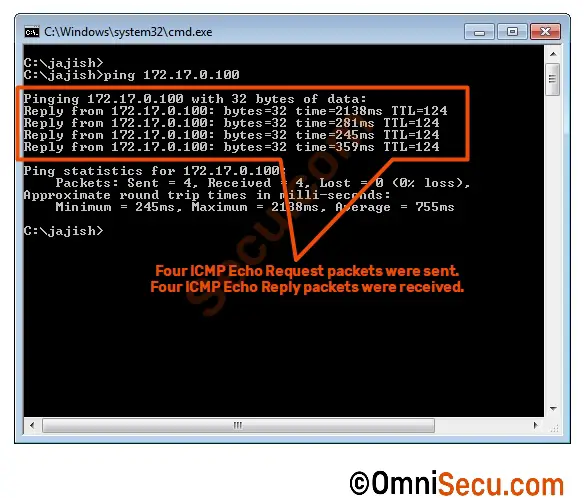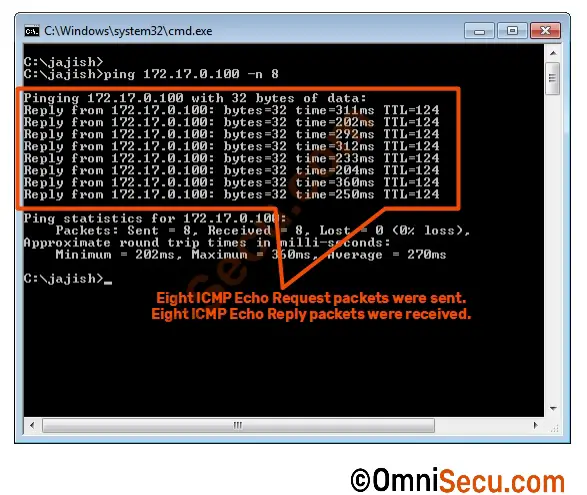How to specify the number of packets sent in ping command
When you run ping command on a Windows machine, the default behavior is to send four ICMP Echo Request packets to destination computer. Ping command then analyze the results by checking ICMP Echo Reply packets from the remote destination computer and display the results in command prompt.
The default nature of sending ICMP Echo Request packets to a remote computer is as shown below.

For some reasons, if you want to specify the exact number of ICMP Echo Request packets sent, you can use -n option of ping command as shown before. In this case I had specified 8 as the number of ICMP Echo Request packets for ping command to send.

If you want to exit the ping command in between, you may use Control + C key combination.